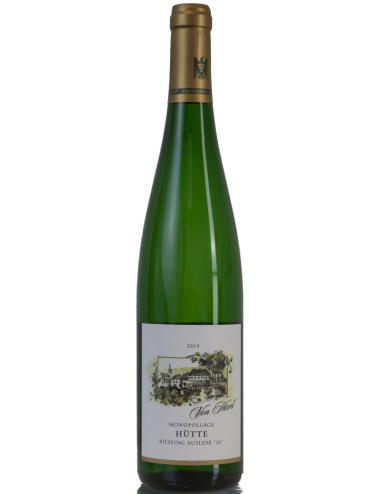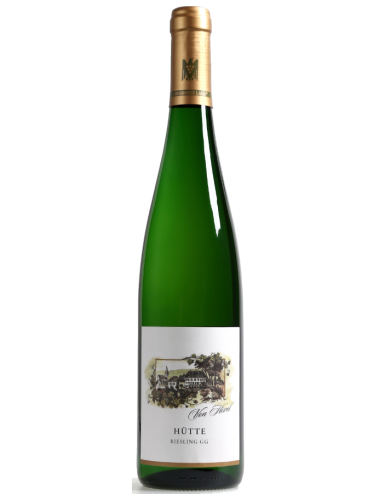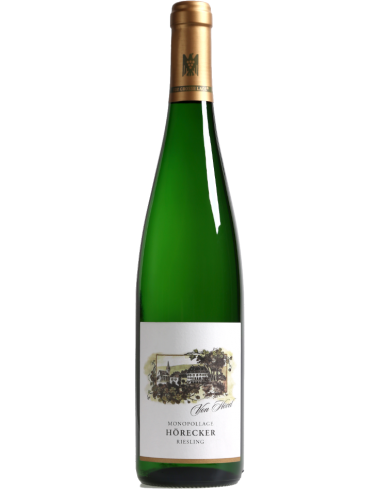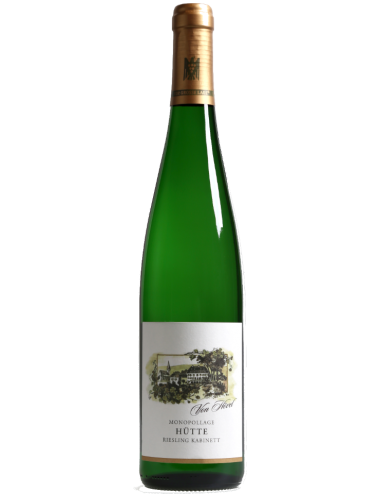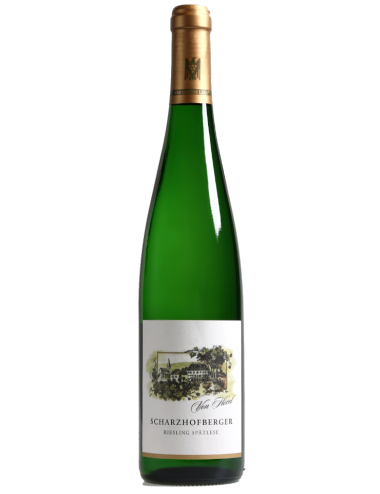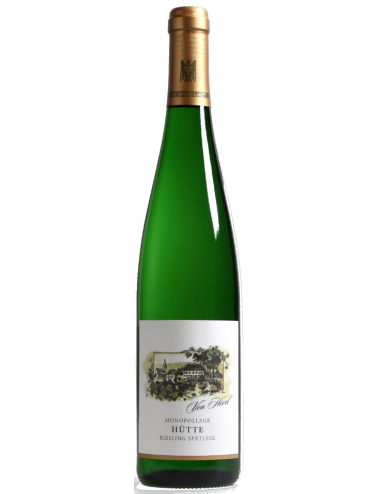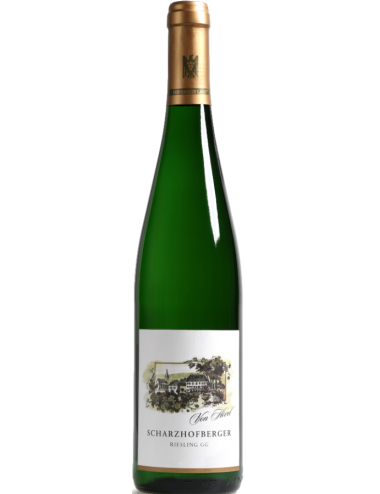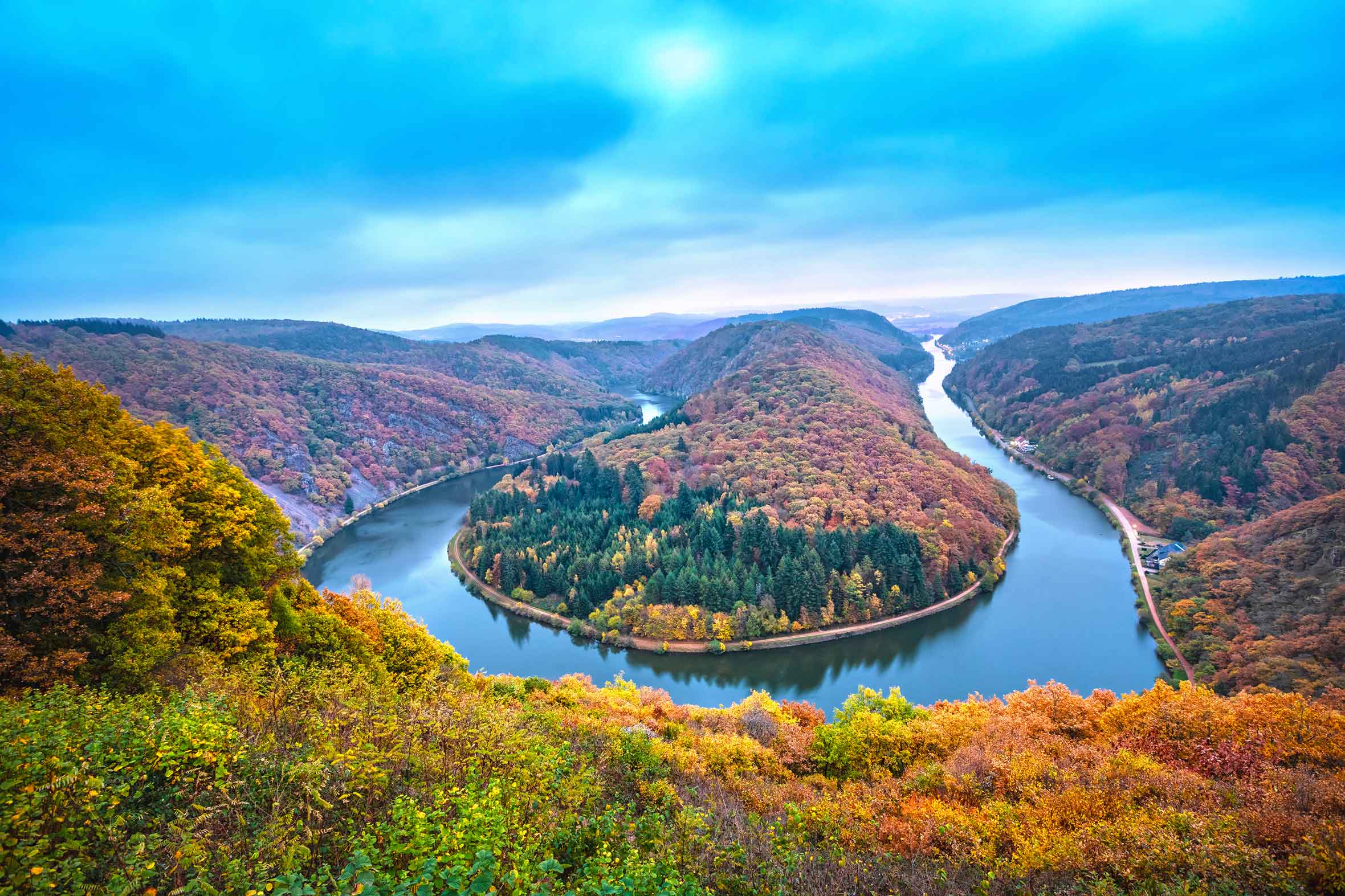
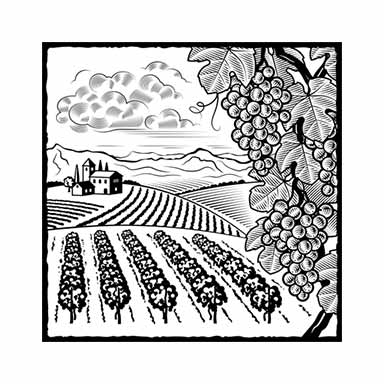
The Saar
The Saar is the largest tributary of the Moselle. The cultivation area extends from Seerig to the mouth of the river at Konz. In terms of area, the Saar growing region is rather small, about twelve kilometers upstream as the crow flies. Nevertheless, there are a large number of excellent steep slope vineyards here.
In Germany, Saar wine is the name given to the quality wine produced on the lower reaches of the Saar River, which belongs to the Mosel wine-growing region in Rhineland-Palatinate. Until spring 2007, the wine-growing region was called "Mosel-Saar-Ruwer", since then only "Mosel".
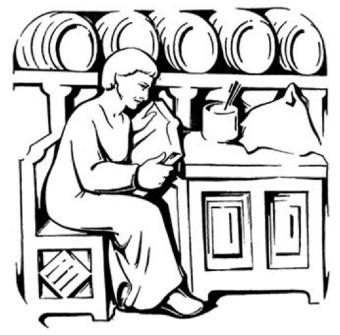
The Saar wine region and its vineyards
The wine from the Saar is grown in the winegrowing communities of Serrig, Saarburg, Irsch, Ockfen, Ayl, Schoden, Wiltingen, Kanzem and Wawern, as well as in the town of Konz, where the Saar flows into the Moselle, which includes the wine villages of Filzen and Könen as well as the dry valley running parallel to the Saar between Konz and Wiltingen - a former oxbow of the Urmosel - known as the Konzer Tälchen, with the wine-growing communities of Niedermennig, Obermennig, Krettnach and Oberemmel.
Read MoreA unique micro-climate
Outstanding Riesling wines from the Saar
The south-facing Saar slopes in particular, which absorb the most sunlight, are among the top international sites among wine critics around the world. The Scharzhofberg near Wiltingen, the Ayl Kupp, the Ockfener Bockstein and the Kanzemer Altenberg are some of the most famous Riesling sites in the world on the Saar. The dominating characteristic of the Saar is the Devonian slate rock with its enormous minerality.
According to the site, you will often find pure slate in all nuances from grey and blue to brown and reddish, often with a high stone proportion, but also combined with clay. The Devon slate is so finely foliated that it can be broken by hand.
The vineyards receive ideal sunlight due to the steep slopes; the dark slate soil stores the sun's heat during the day and releases it again at night. This is advantageous for the development of the Riesling fruit, especially during the cool autumn nights. As a result, the late-ripening Riesling grape has time to accumulate fructose, minerals and vitamins through its long ripening phase until November. For this reason, Saar Riesling in this northern growing region rivals wines from the south. The higher altitude of the Saar Valley and the slightly lower average temperature cause the Riesling's ripening phase to be even longer here than in the Middle or Lower Moselle.
The unique combination of grapevines, microclimate and soil produces unique wines in a long vegetation period of 140 days between flowering and ripening.
The prime vineyards of the Saar
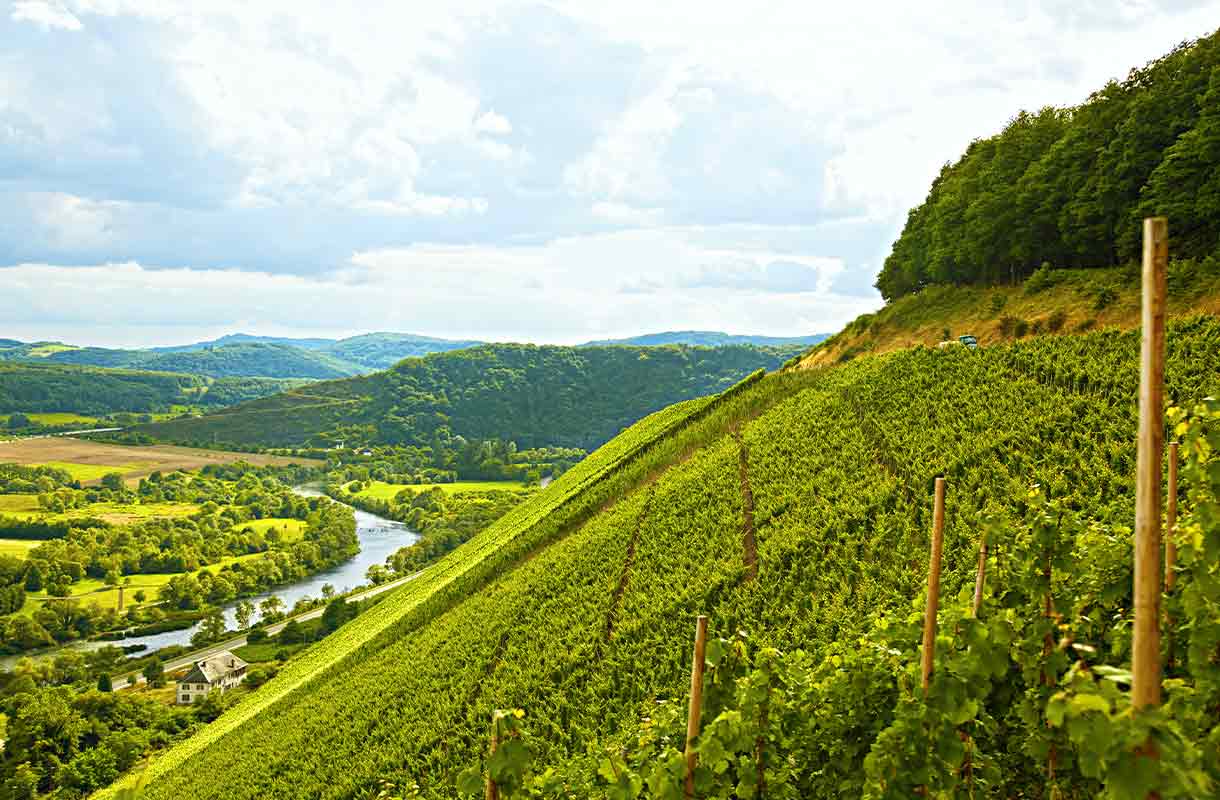
Kanzemer Altenberg
The vineyard resembles a gigantic wall of vines that rises up from the Saar. This wall of vines is unique in Europe, because the rows of vines of the Altenberg de Kanzem extend uninterruptedly for almost 200 meters, with a slope of up to 80%.
Wine estates who produce in this vineyard
-

Von Othegraven
-

Nik Weis St. Urbans-Hof
-

Von Hövel
Kanzemer Altenberg - wines from an exceptional slope.
The slope of the Kanzemer Altenberg is quite exceptional. With a slope of up to 85%, it appears to the viewer as a huge bastion of Riesling vines. The Saar River, which flows at its foot, becomes secondary, the 18.7 hectare estate leaving a lasting impression!
However, it is precisely this river that is responsible for the special climatic conditions of the vineyards. In addition to the favourable southern exposure of the vineyards, which protects them from cool winds, the Saar River offers balanced temperatures and additional light.
The soil of the Kanzemer Altenberg is very diverse. Blue-grey and brown Devonian shales and red weathering rocks are mixed into the soil with a lot of fine earth. The steeper the slope, the lower the proportion of fine soil. Thanks to the horizontal position of the shale layers, erosion is practically excluded and the water supply is good.
The Kanzemer Altenberg produces excellent dessert wines. From graceful, light cabinet wines to the best berry and dry grape selections in the world, to complex late harvest wines that require years of development.
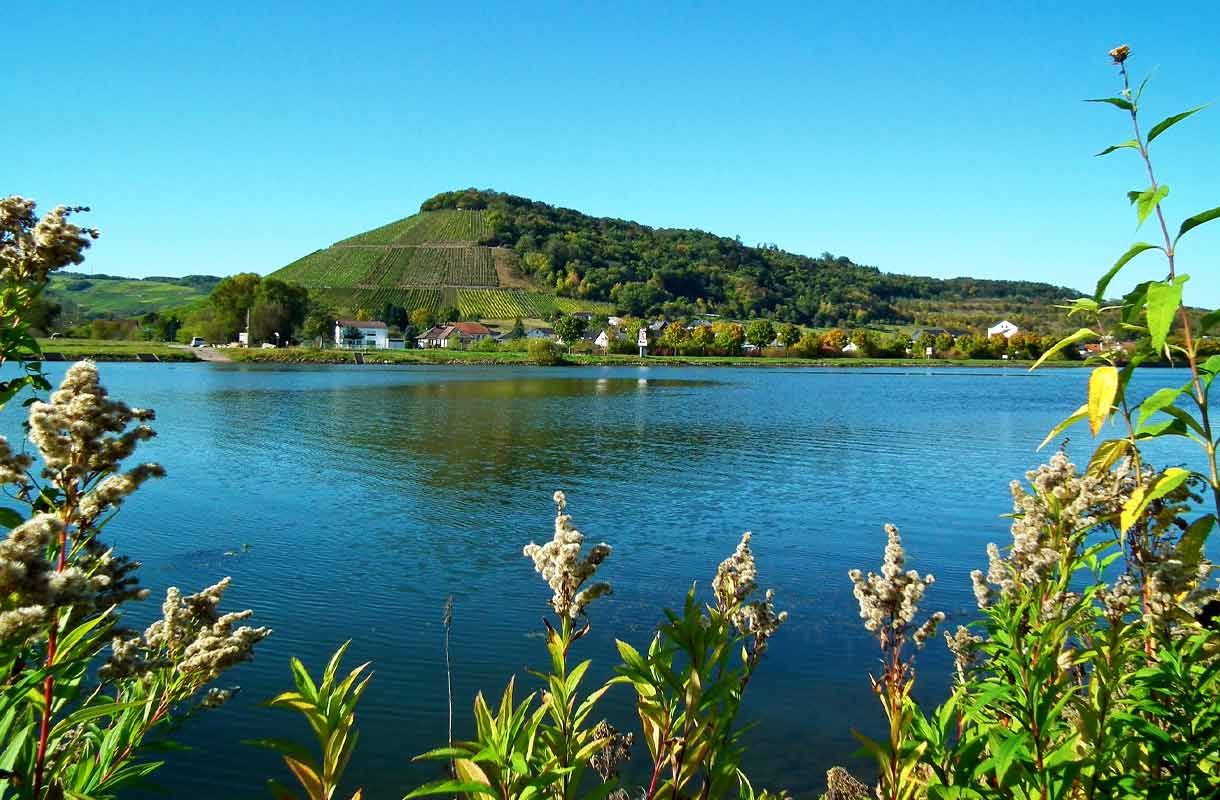
Ayler Kupp
The Ayler Kupp is one of the world-famous wine-growing areas in the Mosel wine region (formerly Mosel-Saar-Ruwer). Its famous location is above the Ayl district of Biebelhausen on the Saar River in the southwest. The vineyard site is characterized by its striking appearance. The rear part of the hill, which is otherwise completely planted with vines, is forested.
Wine estates who produce in this vineyard
-

Peter Lauer
-

Magarethenhof
The vineyard site Ayler Kupp
..extends over several steep slopes around the Saar wine village of Ayl. The majority of the slopes face east, south and west. The soil is deep and consists of grey to red slate soils on the surface. In the subsoil there are mainly grey and blue slate soils. The slopes of the Kupp are stony and partly have a high gravel content. In combination with the climatic conditions, high-quality wines can be produced there year after year. The area of 68 hectares lies at an altitude of 150 to 240 metres above sea level and is mainly south and southwest facing. The vineyard site is divided into 4 different vineyards, which are arranged separately around the village of Ayl. The slopes range from 20% to 60%, depending on the location.
The heart of the steep slope
The best part of the vineyard is in the prominent steep slope in the north-east of Ayl. There, the vault is oriented from north to east. These are top plots whose quality is appreciated worldwide. The actual Ayl Kupp, i.e. the high-quality core, represents the original area of the single vineyard.
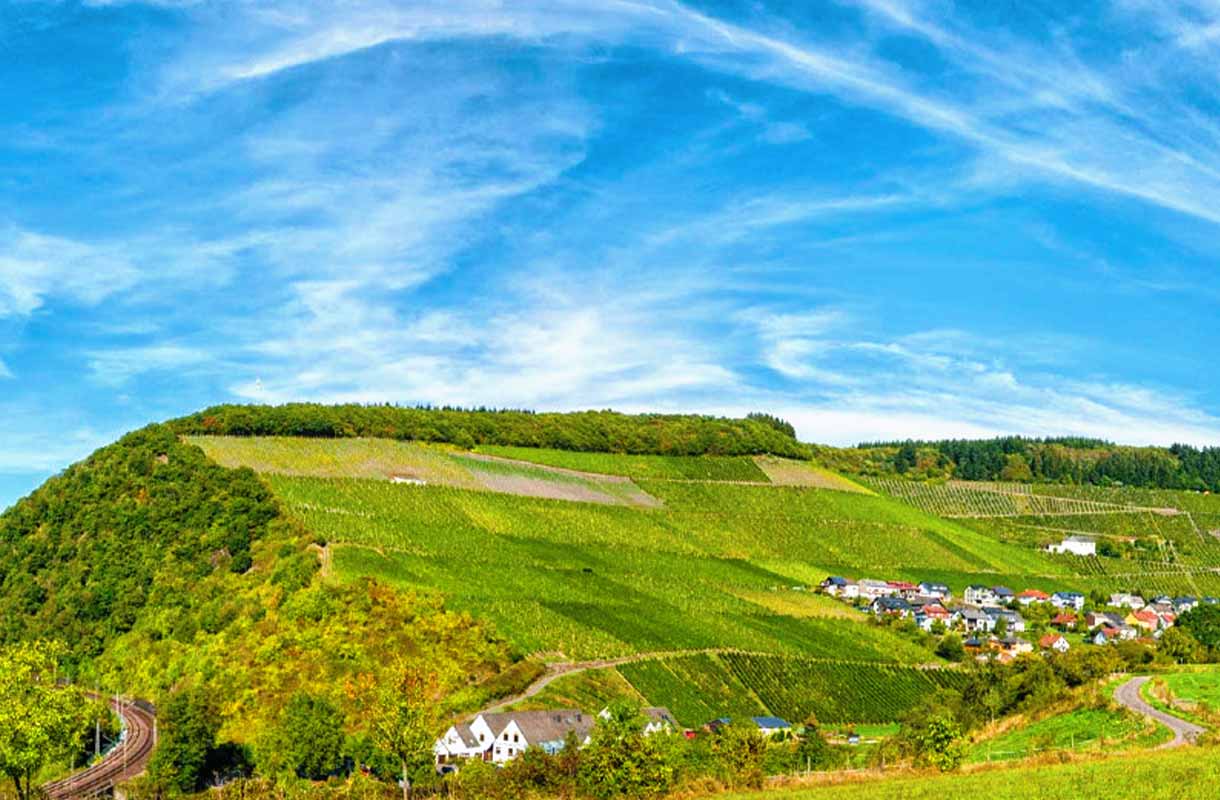
Ockfener Bockstein
The unique vineyard of Ockfener Bockstein is located in the east of the Saar, in a side valley of the river and above the village of Ockfer. The 53 hectare vineyard is relatively large compared to other vineyards in the Saarland, but its predestined and sunny location produces year after year wines of very high quality.
Wine estates who produce in this vineyard
-

Nik Weis St. Urbans-Hof
-

Dr. Wagner
Ockfener Bockstein - The fruit rockets of late harvest and special selections wines
The vines, facing southwest in the central part of the vineyard and south in the eastern and western parts, enjoy long hours of sunshine and are perfectly protected from cold downwind winds by the wooded ridge. The vineyards of the Ockfener Bockstein are located at an altitude of 180 to 320 meters above sea level.
On the skeleton-rich vineyard soils dotted with grey schist, grauwacke and quartzite, mainly Riesling is grown. The steep and stony vineyards have here and there a fine yellowish soil, characteristic of the vineyard.
The Rieslings of the Ockfener Bockstein are mineral and powerful. The Kabinett wines have a smoky, spicy and sometimes floral nose. The top qualities such as Spät- and Auslese are real fruit bombs. The noble and sweet representatives keep perfectly, they evolve from year to year and always offer a multitude of aromas and taste sensations.
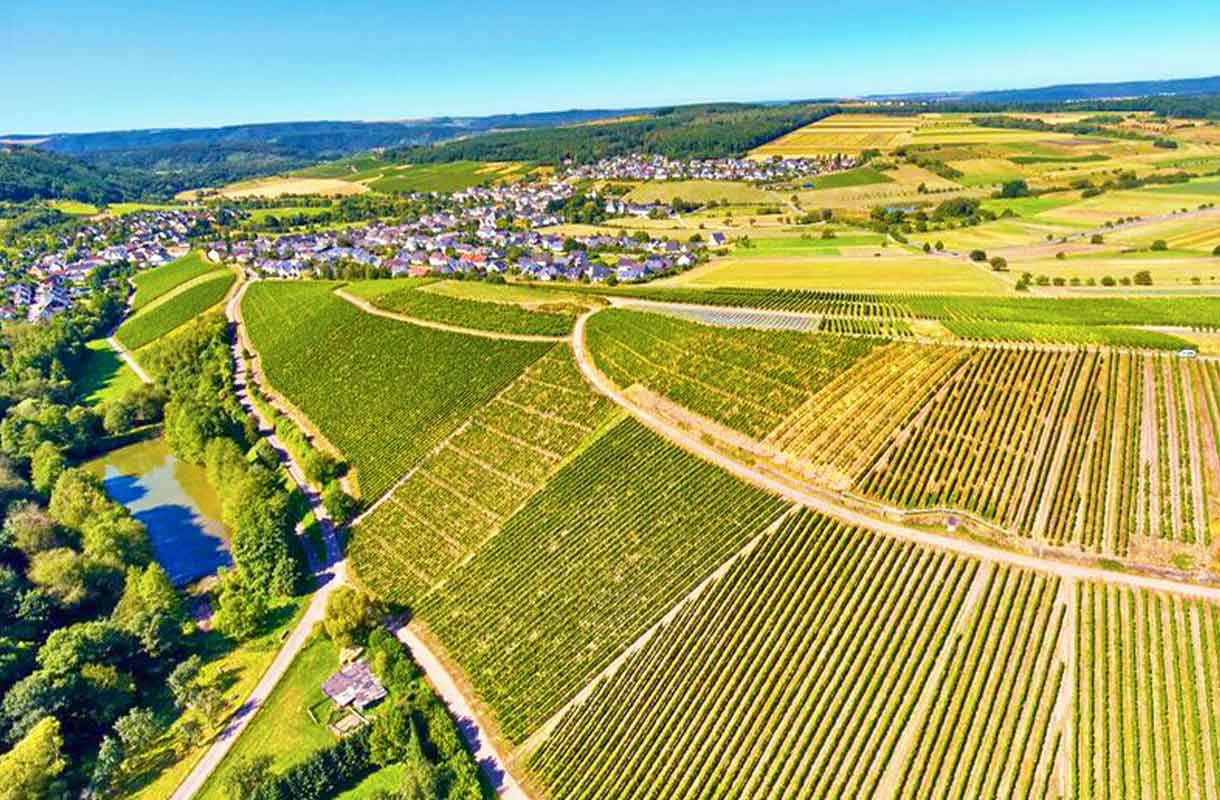
Scharzhofberg
In the south of the Middle Moselle and the Rheingau lies the Wiltinger Scharzhofberg, which is considered the coolest upper vineyard in the Saarland. The slope behind the Scharzhof, which is more than 300 meters high, resembles a mighty rampart. Its soil consists mainly of gray clay and silty slate from the Devonian period. At the foot of the slope there is a high percentage of fine soil and a greater thickness of soil with a slightly better water storage capacity, with some loess loam in the topsoil.
Wine estates who produce in this vineyard
-

Von Hövel
Scharzhofberg - an excellent vineyard with world reputation
The Scharzhofberg is a perfect example of a northern vineyard, as developed by the Romans along the river valleys since the middle of the third century. The wines of the Scharzhofberg are characterized by their proven finesse and delicacy, in stark contrast to the weathered mountain. The cold winds from the Hunsrück regularly sweep over the Scharzhofberg, ensuring that the vines are well ventilated. The strong temperature differences between day and night are compensated by the high slate content of the weathered soil, which stores the sun's heat during the day and releases it to the vines at night.
The unique, world-famous Scharzhofberg site produces extremely subtle and full-bodied Kabinett and Spätlese wines, which are characterized by the slate and develop expressively and nobly over time; it is a first-class crulage for the production of the noble sweet wines Prädikat and Trockenbeerenauslese with almost infinite ripening potential.
The cellars of the "Vereinigte Hospitien" and the von Hövel winery are home to the best examples of the filigree style of Wiltinger Schwarzhofberger wines.
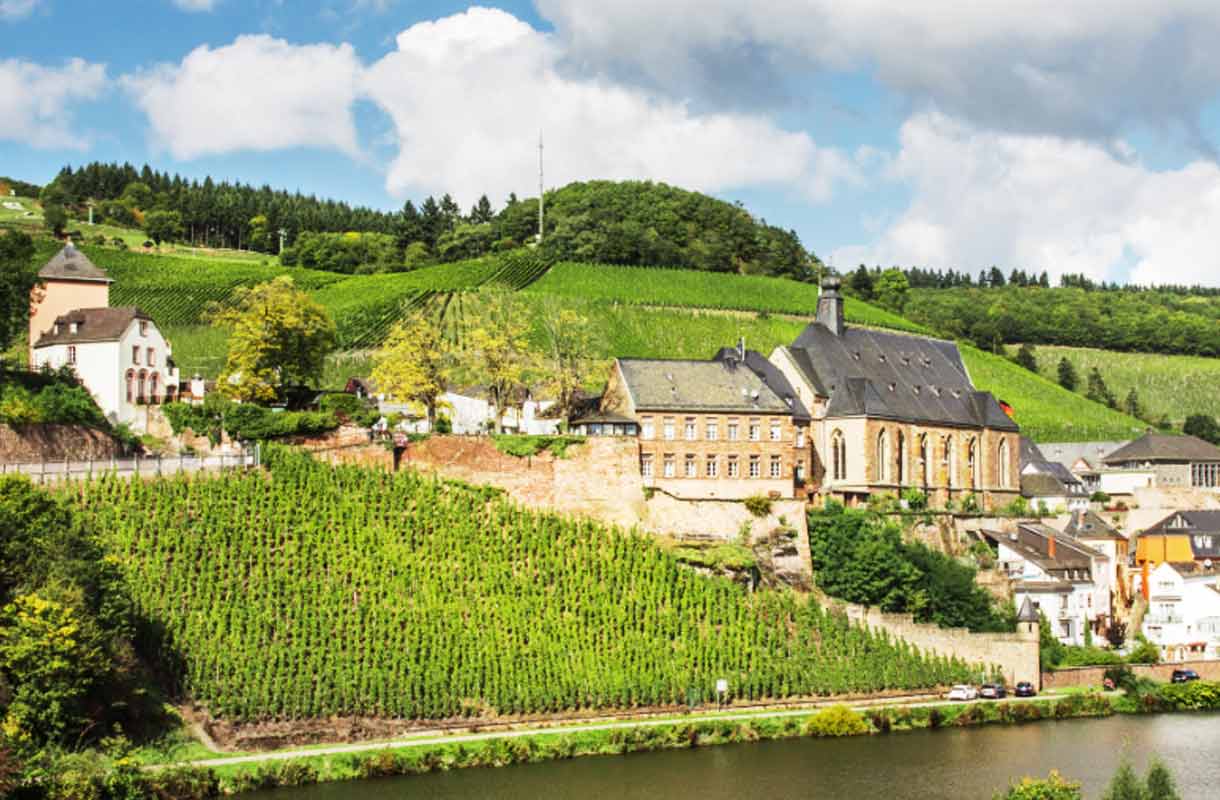
Saarburger Rausch
"Rausch" means " loose rock" in dialect. The site, which is perfectly protected from the wind, extends in part to the centre of the village and is also influenced by the climate of the Saar.
The soils of Saarburger Rausch also contain proportions of grauwacke and red earth.
Wine estates who produce in this vineyard
-

Dr. Wagner
THE VINEYARD SAARBURGER RAUSCH
The 20-hectare sloping vineyard is located north of the state road 135 and faces south. The slope is 30 to 60 per cent and ends directly in the centre of Saarbrücken (Graf-Siegfried-Straße). Above the vineyards, on the plateau of the hill, is the Landal Greenpark "Warsberg". Numerous hiking trails lead here along narrow paths and stairs, partly through the vineyards of well-known winegrowers. The soil of the vineyard consists largely of fine-grained Devonian schist and diabase, a volcanic eruption rock. The old Riesling vines here are rooted up to 10 metres deep in the rock.
No Product found in this category
No Product found in this category
No Product found in this category
No Product found in this category
Wine from the Saar
The stylistic identity of the Sarre Riesling
Typical Sarre Riesling can be dry, fruity or sweet. What they all have in common is their lightness and the pleasure of drinking them.
Purist aromas
The aroma of these wines is generally more purist than that of their Mosel brothers and sisters, and the palate is more mineral. Depending on the degree of ripeness, there are notes of mango, pear, baked apple and fine Darjeeling tea. Smoky and stony nuances mingle in between. On the tongue, it's rock'n'roll. At the end, a big salty note arrives, which can develop a huge pressure in the case of the big dry ones.
A distinctive and spacious feeling
The Sarre Riesling inspires above all by its lively, finely chiselled acidity. It coats the entire mouth, has less of a haptic effect directly on the tongue, but more on the inside of the cheeks. The best Rieslings from the Sarre offer more sensation than taste. They are lively and easy to drink.
Lively lightness
Despite all the intensity of their flavour, these Rieslings still retain a wonderful lightness and buoyancy. They seem to have wings. This is a style of wine that is only possible in the Sarre and in no other wine region in the world. At a time when more and more consumers are fed up with highly alcoholic wines, the Riesling from the Sarre is therefore in tune with the spirit of taste.












